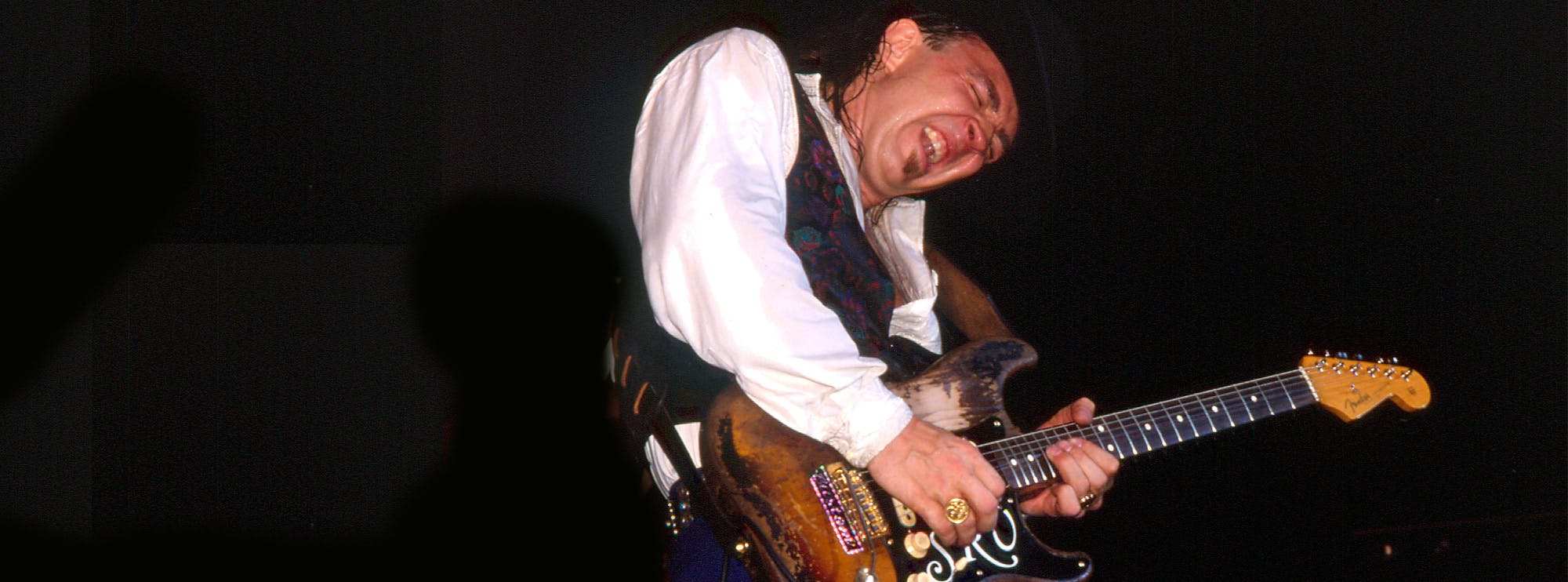Going Under by Evanescence
The LickLibrary note-for-note guitar lesson for “Going Under” by Evanescence brings one of the band’s most powerful tracks directly into your practice space. This song blends dark, brooding atmospheres with aggressive riffing, heavy rhythm work, and punchy melodic lines that remain iconic to this day. Our lesson explores three distinct versions of the song—6-string, 7-string, and baritone—each tailored to suit your gear and playing preference while offering an in-depth look at the techniques used in the original recording.
Whether you're interested in expanding your rhythm chops, mastering altered tunings, or learning how to channel intensity and control through your playing, this lesson will guide you step by step through every riff and nuance. Richard Shaw breaks down this classic track in this exclusive Lick Library video tutorial.
6 String Version
The 6-string version of “Going Under” is perfect for players who want to learn the track without needing extended-range guitars or baritone setups. This version captures all the essence of the original recording while staying true to standard six-string ergonomics.
Techniques Highlighted
Palm Muting – The tight, chugging feel that defines much of the verse and pre-chorus riffs relies heavily on precise palm-muting. This technique helps control note duration and adds punch, perfect for creating that heavy, industrial edge heard in the track.
Power Chords – A staple in modern rock and metal, power chords are used extensively throughout the song. Learning to use them fluidly across different string sets builds a strong rhythmic foundation.
Slides – Slides are used to transition between power chord shapes and melodic phrases. Slides help add fluidity and emotion to your playing, improving your fretboard awareness and phrasing.
Syncopated Rhythms – The song features driving, syncopated rhythms that challenge your internal timing. Mastering this will tighten your rhythm playing and improve your sense of groove.
7 String Version
For players with a 7-string guitar, this version replicates the low-end growl of the original track with ease. The extended range offers more tonal weight and allows for a fuller, more aggressive interpretation of the riffs.
Techniques Highlighted
Alternate Picking – Maintaining speed and accuracy through low-tuned riffs often requires alternate picking. Practicing this helps improve your picking hand efficiency and clarity when navigating fast rhythmic passages.
Open String Riffs – The low B string enables deeper open-string riffs that give the song its menacing tone. These riffs emphasize timing, tone control, and left-hand muting skills.
Pull-Offs – Used in some of the transitional licks and fills, pull-offs add articulation and speed without relying solely on your picking hand. They are great for building fluidity in your lead playing.
Baritone Version
The baritone guitar version delivers the most authentic feel of the original studio recording, replicating the track’s signature weight and depth. Designed for players with baritone setups, this version emphasises control over a longer scale and heavier strings.
Techniques Highlighted
String Bending – Even in lower tunings, string bending is used for expressive detail. Learning to bend with accuracy improves pitch control and emotional delivery in your solos.
Chord Progressions – The use of dark, minor chord progressions in this track supports its haunting atmosphere. This section helps deepen your understanding of songwriting and tonal movement in modern rock.
Hammer-Ons – A few melodic fills incorporate hammer-ons, which help add speed and expression to your phrasing. It’s a great exercise for strength and coordination between fretting fingers.
About the Guitarists
“Going Under” was recorded by Ben Moody and John LeCompt, who were key to Evanescence’s early heavy-yet-melodic guitar sound. Their playing blends metal’s raw power with alternative rock’s emotional depth. Ben Moody's approach to riff writing is known for being both effective and dramatic, using minimalistic phrasing to create huge impact. LeCompt’s rhythm playing brings precision and layering that enhances the gothic textures of the track. Studying their work provides insight into crafting riffs that are both emotionally resonant and technically powerful.
Guitar Techniques Used in This Lesson
- Palm Muting
- Power Chords
- Slides
- Syncopated Rhythms
- Alternate Picking
- Open String Riffs
- Pull-Offs
- String Bending
- Chord Progressions
- Hammer-Ons
By mastering these techniques through our lesson on “Going Under”, guitarists not only learn a powerful track but also sharpen their overall playing ability in areas of rhythm, dynamics, and expression. Whether you’re playing on six strings, seven, or baritone, this song is a rewarding challenge that brings out the best in any rock or metal guitarist.
About The Tutor
Tutor Profile
Rich Shaw
Richard is most well known as the guitarist and co-songwriter for UK metal band, Cradle of Filth, from 2014 until 2022. In his time with the band, he co-wrote and performed on the albums ‘Hammer of the Witches’ (2015), ‘Cryptoriana - The Seductiveness of Decay’ (2017), and ‘Existence is Futile’...



